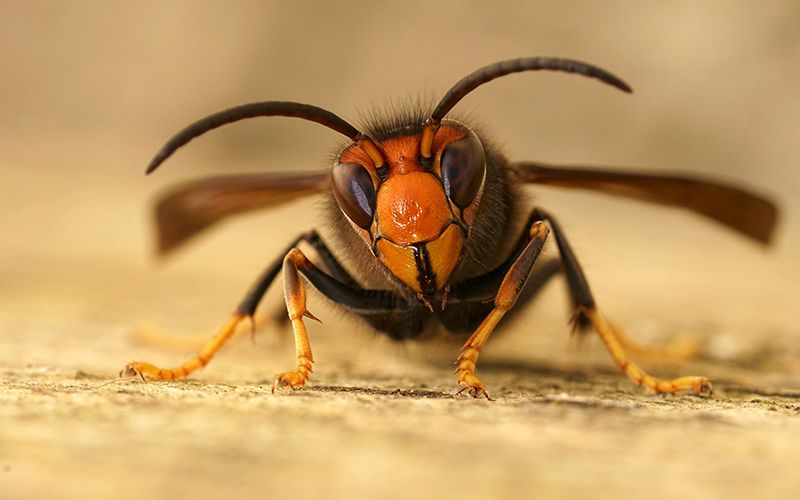A new study has revealed that AI has shown potential in identifying invasive Asian hornets.
Developed by researchers from the University of Exeter, the automated system named VespAI attracts these hornets to a monitoring station, where it captures standardised images with an overhead camera. Upon the arrival of an Asian hornet, VespAI successfully recognises the species with near-perfect accuracy, enabling authorities to respond swiftly.
Asian hornets, also known as yellow-legged hornets, pose a significant threat as they have already invaded large parts of mainland Europe and some regions in East Asia. Recently, sightings have been reported in the US states of Georgia and South Carolina. With the UK positioned at the forefront of the European invasion, there is an immediate requirement for enhanced monitoring systems due to yearly incursions.
“Our goal was to develop something cost-effective and versatile, so anyone – from governments to individual beekeepers – could use it,” said Dr Thomas O’Shea-Wheller of the Environment and Sustainability Institute, Exeter’s Penryn Campus, Cornwall.
“This study tested a prototype version, and the results were encouraging. VespAI shows promise as a robust early warning system to detect Asian hornet ingressions into new regions.”
VespAI operates using a compact processor and stays inactive until its sensors detect an insect matching the size of a hornet. Upon detection, the system’s artificial intelligence algorithm springs into action, examining the image to ascertain whether the insect is an Asian hornet (Vespa velutina) or a native European hornet (Vespa crabro). In the event an Asian hornet is identified, the system dispatches an image alert to the user for verification.
Currently, the UK’s approach to managing Asian hornets relies on public sightings and reports, which introduces certain challenges.
“Unfortunately, the majority of reports submitted are misidentified native species, meaning that the responsible agencies have to manually validate thousands of images every year – our system thus aims to provide a vigilant, accurate and automated surveillance capability to remediate this,” said Dr Peter Kennedy, who conceptualised the system.
“In some parts of Europe, detection relies on hornet trapping – but such traps kill a lot of native insects, and do little to impact Asian hornet numbers.
“VespAI does not kill non-target insects, and thus eliminates the environmental impact of trapping, while ensuring that live hornets can be caught and tracked back to the nest, which is the only effective way to destroy them.”
Throughout the project, extensive trials of the system were conducted on the island of Jersey, a location prone to frequent Asian hornet incursions owing to its closeness to France.
Despite being exposed to Asian hornets, European hornets, and a multitude of other insect species, the detection algorithm of VespAI adeptly differentiated among them, even in scenarios where they appeared in significant quantities.
“That’s the benefit of our system – its high accuracy means that it won’t wrongly identify other species, or miss any Asian hornets that visit,” said Dr O’Shea-Wheller.
The research initiative brought together biologists and data scientists from the University of Exeter’s Environment and Sustainability Institute, Centre for Ecology and Conservation, and Institute for Data Science and Artificial Intelligence.
In collaboration with Defra, the National Bee Unit, the British Beekeepers Association, and Vita Bee Health, the team plans to roll out more prototypes this year.
Facing a record number of Asian hornet sightings in the UK in 2023, the system is poised to enhance exclusion measures at a critical moment.
“The proposed device may prove a powerful tool in the early determination of the presence of Asian hornets in an area, and thereby fills an important gap,” said Alistair Christie, Senior Scientific Officer.
You can find the paper: “VespAI: a deep learning-based system for the detection of invasive hornets,” published in Communications Biology, here.




